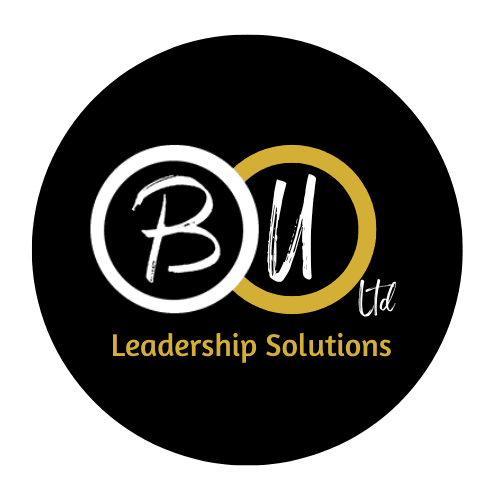Welcome to the 4th instalment of our #ExpectationSeries blog – The Art of Setting Clear and Achievable Expectations. If you haven’t already, please visit our blog page to read the other three blog posts. They’ll help you understand the subject of expectations better.
We’ve already established in previous posts that expectations play a pivotal role in guiding individual endeavours, team successes, and organisational triumphs. Today, we’ll be exploring the art of setting clear and achievable expectations. The kind that can be leveraged for success.
Let’s get to work!
When it comes to setting expectations, clarity and achievability are fundamental pillars. Since we already know that expectations provide direction for both leaders and team members, it’s of utmost importance that we form them with careful attention to clarity and achievability.
Having clear expectation ensures communication flourishes, misunderstandings fade away, and collective energy aligns toward common goals. Also, when achievability is duly considered, the laid out path is not only clear but can be realistically navigated too. In other words, pitfalls of overambition and ambiguity are prevented, and an environment of attainability is fostered.
The Relationship Between Clarity and Achievability
Clarity and achievability have something like a dance going on. One that creates a symbiotic relationship that’s required to leverage expectations for success. Clear expectations without achievability can lead to frustration and demotivation. Achievable expectations without clarity can result in directionless and/or wasted effort. Together, clarity and achievability form the bedrock upon which leaders set (and communicate) expectations that improve engagement and build a culture of success.
Practical Strategies For Setting Clear and Achievable Expectations
Let’s now look at some helpful things you can do to ensure your intentional expectations produce the desired outcomes.
1. Be Mindful
Pay careful attention to what’s going on within you. Observe your thoughts and be actively involved in shaping them into desires. Your active participation will ensure that you engage with your inner surroundings (stored information, thoughts, beliefs, values, passion, and emotions) to develop tangible outcomes that are meaningful for you. This active participation not only fosters awareness but also empowers you to address and overcome negative thoughts, limiting beliefs, or unhelpful biases, enabling a more constructive and fulfilling journey.
2. Use C.R.A.P as a Guide
Ensure your expectations have what I call ‘C.R.A.P Features’ (Clarity, Relevance, Accountability, Practicality). This will help ensure that they are clear and achievable.
3. Seek Diverse Perspectives Where Needed
Avoid groupthink by actively seeking diverse perspectives and input from your team; this is particularly relevant for team and organisational expectations. Seeking diverse perspectives can help you form well-rounded expectations and foster a sense of commitment from your people.
4. Visualise and Chunk Down
As mentioned in a previous post, expectations serve as the cornerstone for formulating visions, strategies, and goals. They establish the overarching direction that guides the crafting of your vision, the development of strategies, and the creation of goals to achieve desired outcomes. The process of visualization is the genesis of a vision while breaking down the elements into manageable components gives rise to strategies and goals. Engaging in the practices of visualization and chunking down not only clarifies your expectations but also renders them more manageable and measurable.
5. Nurture a Culture of Clarity
Clarity in expectations is relevant in expectation from formation through to execution; crafting it, communicating it, reviewing it, adjusting it, and achieving the intended outcome(s). Clarity ensures everyone involved in the expectation process is on the same page at all times, is engaged, and has crystal-clear guidance to follow through on the expectation.
6. Address Challenges Effectively
Setting clear expectations and achieving them is not without its challenges. Some common ones to be aware of are ambiguity, differing perspectives, and assumptions. If left unaddressed, these challenges can become obstacles during the execution phase. To address them, you can have open communication channels, verify and clarify every possible thing, and have regular check-ins.
7. Have Periodic Reviews
Make it a point of duty to review and adjust your expectations as circumstances evolve and also monitor progress. If you have chunked down your expectations, you’ll need to review your strategies and/or goals. This will help you ensure you are still on track to achieve your expectations and make necessary adjustments.
Periodic reviews help you stay flexible and as you know; flexibility is key to effective leadership.
Conclusion
Setting clear and achievable expectations is important for your continuous effectiveness and success as a leader. By being mindful, using C.R.A.P, seeking diverse perspectives, visualising and chunking down, nurturing a culture of clarity, addressing challenges effectively, and having periodic reviews, you can create expectations that effectively guide decisions and actions toward success for yourself, your team, and your organisation.
Remember, a well-crafted expectation is not a destination; it’s a foundation for meaningful goals and a roadmap for success.
If you have any questions about expectations, feel free to ask them in the comment section. If you have experiences or tips you’d like to share about setting expectations, please share them in the comments section too.
Need help with forming or executing expectations? I’m happy to help. Simply send me an email with details of what you need help with: info@belindaujani.co.uk
Be Effective and Successful!





Leave a Reply
Your email is safe with us.